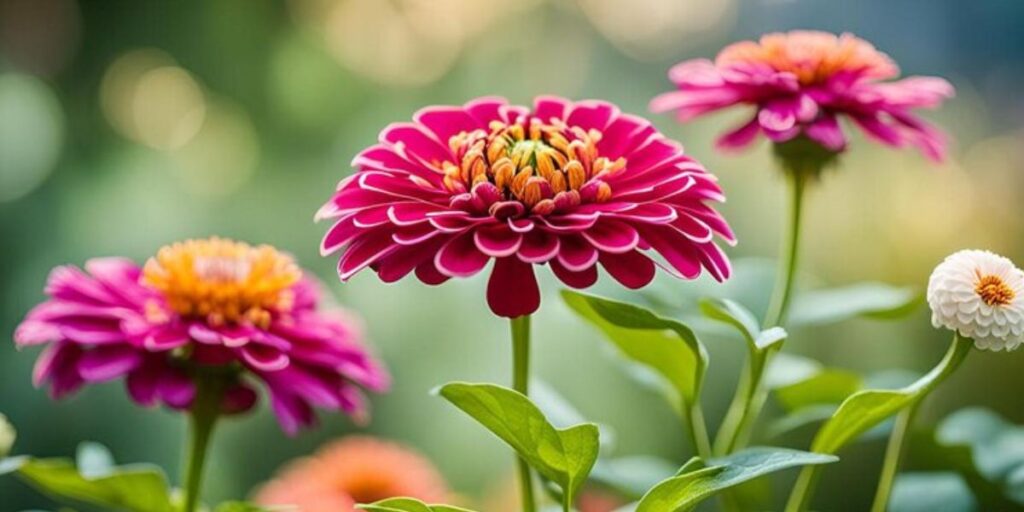Dahlia pinnata, often simply referred to as dahlias, is a beloved garden flower known for its stunning blooms and vibrant colors. These perennial plants belong to the Asteraceae family and are native to Central Mexico. Dahlia pinnata is celebrated for its wide variety of shapes, sizes, and colors, making it a favorite among gardeners and florists alike. In this article, we will explore the various aspects of growing and caring for dahlia pinnata, including their history, growing conditions, propagation, pests and diseases, and tips for stunning displays.
A Brief History of Dahlia Pinnata
The history of dahlias dates back to the Aztecs, who cultivated them for both ornamental purposes and food. The name “dahlia” honors the Swedish botanist Anders Dahl, who studied these flowers extensively. In the early 19th century, dahlias were introduced to Europe, where they quickly gained popularity. Over the years, extensive breeding efforts have resulted in thousands of cultivars, each with unique characteristics, making dahlia pinnata a staple in gardens worldwide.
Characteristics of Dahlia Pinnata
Dahlia pinnata is recognized for its large, showy blooms that can range in diameter from 2 to 12 inches, depending on the cultivar. The flowers come in an array of colors, including white, yellow, orange, pink, red, and purple, often with intricate patterns. The foliage is typically dark green and has a bushy growth habit, reaching heights of 1 to 4 feet, depending on the variety. Dahlia pinnata is generally classified into several flower types, including:
- Decorative Dahlias: Known for their large, fully double blooms.
- Cactus Dahlias: Characterized by their pointed petals that resemble cactus spines.
- Ball Dahlias: Round, compact blooms that are perfect for borders and pots.
- Pompon Dahlias: Small, spherical flowers that add charm to any garden.
Ideal Growing Conditions for Dahlia Pinnata
To ensure the best growth and blooming of dahlia pinnata, it’s essential to provide them with the right growing conditions:
Soil Requirements
Dahlias thrive in well-draining, nutrient-rich soil with a pH level between 6.0 and 7.0. Adding organic matter, such as compost or well-rotted manure, can improve soil fertility and drainage.
Sunlight
Dahlia pinnata requires full sun for at least six hours a day. Planting them in a sunny location will encourage strong growth and abundant blooms. However, in extremely hot climates, some afternoon shade can help prevent the flowers from wilting.
Watering
Consistent moisture is crucial for dahlia growth. Water them deeply once a week, ensuring that the soil remains moist but not waterlogged. During dry spells or hot weather, more frequent watering may be necessary. Mulching around the base of the plants can help retain soil moisture and suppress weeds.
Fertilization
Dahlias are heavy feeders, so regular fertilization is important for healthy growth and vibrant blooms. A balanced fertilizer with equal parts nitrogen, phosphorus, and potassium should be applied every four to six weeks during the growing season. Additionally, a high-phosphorus fertilizer can be used to promote blooming.
Planting Dahlia Pinnata
When planting dahlia pinnata, timing and technique are essential for successful growth:
Timing
Dahlias are tender perennials and should be planted after the last frost in spring when the soil has warmed to at least 60°F (15°C). In cooler regions, starting the tubers indoors 4 to 6 weeks before the last frost can give them a head start.
Planting Technique
- Choose Healthy Tubers: Select plump, firm tubers with healthy eyes (the small growth buds).
- Prepare the Planting Site: Dig a hole that is about 6 to 8 inches deep and 12 inches wide. Mix in compost or well-rotted manure.
- Plant the Tubers: Place the tuber horizontally in the hole with the eyes facing up. Cover it with soil and water thoroughly.
- Spacing: Space dahlia plants 12 to 36 inches apart, depending on the variety. Taller varieties may require more space for airflow and support.
Caring for Dahlia Pinnata
Caring for dahlia pinnata involves regular maintenance to promote healthy growth and blooming:
Staking
Due to their tall growth and heavy blooms, dahlias often require staking to prevent them from falling over. Use bamboo stakes or plant supports to secure the stems, especially for taller varieties.
Deadheading
To encourage continuous blooming, regularly deadhead spent flowers by removing them at the base of the stem. This practice helps redirect the plant’s energy toward producing new blooms rather than seed production.
Pest and Disease Management
Dahlia pinnata can be susceptible to pests and diseases, but with proper care, many issues can be avoided:
- Pests: Common pests include aphids, slugs, and spider mites. Regularly inspect plants and use insecticidal soap or neem oil as necessary to control infestations.
- Diseases: Fungal diseases like powdery mildew can affect dahlias, especially in humid conditions. Ensure good air circulation, avoid overhead watering, and apply fungicides if needed.
Propagating Dahlia Pinnata
Dahlia pinnata can be propagated through tubers or cuttings:
Tubers
After the growing season, dahlias produce tubers that can be dug up and stored for the winter. In late fall, once the foliage has died back, carefully lift the tubers from the soil. Trim the stems to about 4 inches and allow the tubers to dry for a few days in a cool, dark place. Store them in a breathable container, such as a paper bag or cardboard box, in a cool, dark location until spring.
Cuttings
Dahlia pinnata can also be propagated from stem cuttings. In early spring, take cuttings from healthy plants and place them in water or moist soil until they develop roots. Once rooted, they can be transplanted into the garden or pots.
Creating Stunning Displays with Dahlia Pinnata
Dahlia pinnata’s vibrant colors and diverse forms make them perfect for various garden designs. Here are some ideas to create stunning displays:
Borders and Edges
Dahlias can be planted along borders or pathways to create a colorful backdrop. Mixing different varieties can enhance the visual appeal, as the varying heights and colors complement each other beautifully.
Cut Flower Arrangements
Dahlia pinnata is a favorite among florists for cut flower arrangements. Their long stems and large blooms make them ideal for bouquets, centerpieces, and floral decorations. To extend the vase life, cut flowers early in the morning and place them in clean, cool water.
Container Gardening
Dahlia pinnata also thrives in containers, making them suitable for patios, balconies, or small gardens. Choose large pots to accommodate their root systems and ensure proper drainage.
Conclusion
Dahlia pinnata is a captivating flower that can elevate any garden with its breathtaking blooms and vibrant colors. With the right care, growing conditions, and maintenance, you can enjoy a flourishing display of dahlias throughout the growing season. Whether you’re a seasoned gardener or a beginner, incorporating dahlia pinnata into your garden will undoubtedly bring joy and beauty to your outdoor space.
FAQs
How do I prevent pests from attacking my dahlias?
To prevent pests, regularly inspect your dahlias and keep the garden tidy. Using companion planting and natural predators, like ladybugs, can also help control pest populations. If necessary, apply insecticidal soap or neem oil to affected plants.
When is the best time to plant dahlia tubers?
The best time to plant dahlia tubers is after the last frost in spring when the soil temperature is at least 60°F (15°C). In cooler climates, consider starting them indoors before transplanting them outside.
How can I extend the blooming period of my dahlias?
To extend the blooming period of your dahlias, regularly deadhead spent flowers to encourage more blooms. Fertilizing with a high-phosphorus fertilizer can also promote blooming.
Can I grow dahlias in partial shade?
While dahlia pinnata prefers full sun, they can tolerate partial shade. However, fewer blooms may result, and the plants might become leggy as they reach for sunlight.
How do I store dahlia tubers for winter?
After the growing season, carefully dig up the tubers, trim the stems, and allow them to dry for a few days. Store the tubers in a cool, dark, and dry place in a breathable container until spring.







